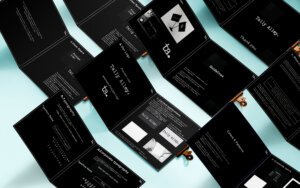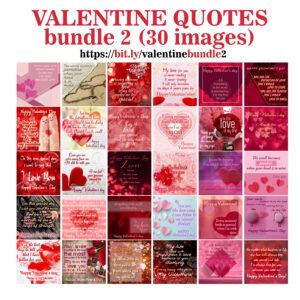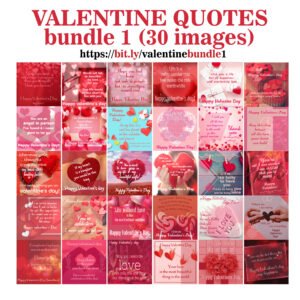Corporate Brand Identity
A corporate brand identity is a set of symbols, colors, fonts, and images that represent a company’s products and services. A Brand book or corporate brand identity is developed to create a strong impression about a company’s products and/or services. A corporate brand is o
ften associated with a specific product or service. Branding is the first step towards building a brand. To clarify a brand is a unique identity that represents a company’s values, vision, mission, and personality. Brands have become increasingly important in today’s business world. A strong brand helps companies build trust with their customers, while a weak brand can lead to customer distrust.
Visual identity or Corporate Brand Identity refers to the look and feel of a brand. It includes everything from logos to fonts, colors, and photography. Corporate identity is the brand image of a company. Therefore It includes everything about the company’s name, logo, colors, fonts, taglines, etc.

Brand Style Guide
A corporate identity should be unique and memorable. It should reflect the values and mission of the company. A brand style guide may consist of different pages from 1 to 50 or even more with good layout:Layout is the arrangement of elements on a page. Elements may be images, graphics, videos, links, etc. Layout helps in making the content visually appealing. A branding kit is a set of tools that are designed to help you brand your products. These kits are often sold separately, but they can also be bundled together in a single package. So you may have seen these kits at craft stores, art supply stores, or even online retailers.
Brand Style Guide
A branding kit contains everything you need to create a logo, business cards, letterhead, envelopes, stickers, etc. Another Good name for Brand Style guide is Brand Bible: The brand bible is a collection of information about a company’s products, services, history, and mission statement. A brand bible is a document that describes how a business operates and what its goals are. It should be written in a way that makes sense to consumers. It should also describe the company’s vision and values.
The first page of every brand book is about the Mission Statement: A company mission statement is a short phrase that defines the purpose of a company. It is often included at the beginning of a company’s website or printed on a business card. To clarify a company mission statement is usually three to five sentences long. It should explain the company’s vision and goals. Proceeding the next page you will see the company’s Vision Statement: A company vision statement is a longer phrase that explains the company’s direction and future plans. Therefore It is often included on a company’s website or on a business card. Thus It should define the company’s core beliefs and values.
Moreover You may or may not add a page for Company’s History page: A company history is a detailed account of a company’s past. It includes information about the founding of the company, the people who founded it, and the major events that have shaped the company over time. It may also include information about the company’s products and services.
Brand Bible
Company Value is strong part in any brand guide: A company values statement is a list of the company’s core beliefs. These beliefs should be clearly stated and should reflect the company’s culture.
This is why we say that Brand style guides are a set of guidelines that help brands communicate their brand identity across various channels. So these guides are often created by marketing teams to ensure consistency between different departments. Therefore a brand style guide should be developed based on the company’s core values and vision. Hence it should be designed to reflect the company’s personality and culture. A brand identity guideline is a document that defines how a brand looks, feels, sounds, and behaves. moreover It is a collection of visual elements that represent the brand. It includes everything from logos to fonts to colors and typography.
Moreover It includes everything from logo design to color palette, typography, photography, and even product packaging. A brand style guide should be created early in the branding process and should be revisited throughout the entire branding process. To clarify Branding is the first step towards establishing yourself as a brand. A brand is a name, term, design, symbol, or any other feature that identifies a product or service. Therefore Brands have become increasingly important in today’s world.
People use brands to identify products they want to buy.
When people think about a certain brand, they associate it with positive feelings. corporate visual identity and brand style guide for the company’s global distribution infrastructure. It is designed to enable companies to design their internal information products so as not only communicate with customers, but also enhance customer relationships through engagement experiences.” : “Elegant corporate visual quality solutions help organizations create superior communication tools that will serve them well in all areas of business” – CIO magazine
-
Product on salegreetings sticker wreath heart floralOriginal price was: $10.00.$8.00Current price is: $8.00.
-
Product on saleDesign a Business Card In Adobe IllustratorOriginal price was: $40.00.$30.00Current price is: $30.00.
-
Product on saleI will setup shopify facebook ads campaign, advertising, marketing for your businessOriginal price was: $100.00.$80.00Current price is: $80.00.
-
Product on sale800 word Article with imagesOriginal price was: $60.00.$40.00Current price is: $40.00.
-
Product on saleVALENTINES DAY POST BUNDLE2 30Original price was: $10.00.$1.00Current price is: $1.00.
-
Product on saleVALENTINES DAY POST BUNDLE1 30Original price was: $10.00.$1.00Current price is: $1.00.
-
Product on sale*Sale* I Will Provide Expert Amazon ConsultationOriginal price was: $285.00.$230.00Current price is: $230.00.
-
Product on sale5 PREMIUM PRODUCTS RESEARCH + 2 BONUSESOriginal price was: $299.00.$249.00Current price is: $249.00.
-
Product on saleAMAZON PRODUCT LISTING AND LAUNCHING / 1×1 MENTORSHIPOriginal price was: $1,997.00.$1,499.00Current price is: $1,499.00.
Logo Design
Logos are the visual representation of a business’ name and its products. Logos are designed to help people recognize a company’s products and distinguish them from others. A logo should be simple enough to be recognized at a distance, yet complex enough to convey meaning. A logo is the visual representation of a brand. Moreover it should communicate what the brand stands for, who they are, and how they want people to perceive them. Logo design portions fills up 50% of the corporate brand identity guides, as it will have different variations and versions. A good logo is memorable and consistent across different platforms. Hence logo design is the art of designing logos.
It is the first thing people notice when they look at your business card or website.
A good logo design conveys your message clearly and effectively, and it should be visually appealing: Visual appeal is how well a design looks. It includes things like colors, layout, typography, etc. A logo is the first impression people have of your business. It’s how they identify who you are and what you stand for. Your logo should be simple yet effective.When You want something that represents your brand and makes people feel good about it. Logos are the visual representation of a company’s brand. Logos are designed to represent a business’ identity and should always be unique and memorable. There are many different ways to create a logo. You can start with a simple sketch, then move onto a computer program, or even hand draw it out.
Logo is the Face
Your logo is the face of your company. It is the first thing people will see and interact with. So make sure it is professional looking and simple enough to understand. Remember, you only have about 10 seconds to grab someone’s attention before they move onto something else.
Color Palette
Colors play a major role in branding. Similarly Colors can influence how we feel and what we think. Colors can make us happy or sad, excited or calm. Sometimes Colors can even change our mood. When choosing colors for a logo, consider the following:
- What emotion does the color evoke?
- Is the color bright or dull?
- Does the color have any special significance?
- How many different colors are being used?
- Are they complementary or contrasting?
- Do they work together or clash?
The colors used in the branding or logo are set in a color palette: Which (Color palette) refers to the range of colors used in a particular design project. It is the combination of colors that make up the design. Colors have different meanings and emotions associated with them. Hence, choosing the right color palette for your design projects is very important. Your brand colors should reflect your business’ personality. If you’re a tech startup, then blue might not be the best choice. On the other hand, if you’re a flower shop, then purple would probably work well.
The corporate color palette is a collection of colors that represent the company’s brand identity. These colors should reflect the company’s values, culture, and personality. Corporate color palettes are often created using a combination of primary and secondary colors. While primary colors are those that have no other color mixed into them; they are bright and bold. And secondary colors are mixtures of two primary colors. When choosing a corporate color palette, keep these things in mind:
- Use only 2-3 colors
- Choose colors that work together well
- Avoid pastel colors
- Keep the palette simple
- Don’t use too many different shades of the same color
- Try not to repeat any colors
- Be careful about what colors you choose
Brand Color Guidelines
- Green
Green is the color associated with freshness, purity, and vitality. It is the perfect color for cannabis products. When choosing green as a brand color, keep in mind that it should not be too bright or dark. A good balance between both is ideal. - Blue
Blue is the color associated with calmness, tranquility, and peace. It is the perfect choice for cannabis products. When selecting blue as a brand color, make sure it does not look too dark or light. A good balance between the two is ideal. - Purple
Purple is the color associated with luxury, royalty, and wealth. It is the perfect selection for cannabis products. When using purple as a brand color, avoid making it too dark or light. Balance is key. - Red
Red is the color associated with passion, love, and excitement. It is the perfect option for cannabis products. When deciding on red as a brand color, remember that it should not be overly bright or dark. A nice balance is ideal. - Orange
Orange is the color associated with warmth, happiness, and joy. It is the perfect pick for cannabis products. When picking orange as a brand color, try to avoid making it too bright or dark. Balance is key. - Yellow
Yellow is the color associated with sunshine, hope, and optimism. It is the perfect fit for cannabis products. When considering yellow as a brand color, do not go overboard with either brightness or darkness. A good balance is ideal. - White
White is the color associated with cleanliness, innocence, and purity. It is the best choice for cannabis products. Keep in mind that white should not be too bright, nor too dark. A good balance is key.
Font Style
Font style refers to the typeface (the design) of a logo. There are many types of font styles:
serif and sans-serif. Serif fonts are those that have small tails or extensions at the end of each letter. Sans-serif fonts do not have these tails.
Decorative and Script. Decorative fonts are the ones that are styles but not necessary that they are connected to each other, or not actually in a flow. On the other hand, the script fonts are those which are connected, and feels like written with bare hands.
Fonts are subdivided into more categories, Elegant, funny, Luxury, Funky and many more, the names can specify what will be there when you are searching for it.
Many people ask that what is Typography: Typography is the arrangement of typeface (font) on a page. It is the use of letters, numbers, symbols, punctuation marks, etc., to convey information. Good typography makes text readable and attractive.
Typography is the use of typeface (font) to communicate ideas. It’s the way words look on paper. There are many different types of fonts, each with their own unique characteristics. When choosing a font, consider things like legibility, readability, and familiarity. This all will be visible in the corporate brand identity. so try to keel everything according to the Typography you have stated in the brand identity.
Typography Guideline
1. Use a serif font
Serif fonts have been around since the 15th century and were originally designed to help distinguish letters in handwriting. These are generally considered to be more legible than sans-serif fonts (which do not have any kind of “tail” at the end of each letter). Serif fonts are commonly used in print and web design because they make text easier to read.
2. Avoid using ALL CAPS
All caps is a typographic style where all capital letters are used instead of lowercase letters. All caps should only be used sparingly and never for emphasis. If you need to use all caps, consider using bolding or italics instead.
3. Don’t overuse hyphens
Hyphens are used to indicate words that are missing. Hyphens are best used in short phrases or names. Overusing hyphens makes text look messy and unprofessional.
4. Keep line lengths under 60 characters
Line length refers to the number of characters in a single line of text. Longer line lengths can make text difficult to read. Line length guidelines vary depending on the typeface being used, but generally speaking, the longer the line length, the harder it is to read.
5. Limit the amount of white space
White space refers to the empty spaces between words and sentences. White space helps break up long blocks of text and gives readers breathing room. Too much white space can make text hard to read.
6. Use proper punctuation
Punctuation marks are small symbols placed at the ends of certain parts of speech. Punctuation marks are often ignored in writing, but they are actually quite important. Proper punctuation makes text easier to understand and reduces confusion.
7. Use consistent spacing
Spacing refers to the distance between individual letters and words. Consistent spacing makes text easier to read. Spacing is especially important if you’re using all capitals.
4. Brand Positioning
Brand positioning is the way a brand positions itself in the market. It is about communicating who a brand is, what makes them special, and what sets them apart from competitors. This is also known as Branding: Branding is the way a business presents its products and services to consumers. It involves developing a strong emotional connection between the consumer and the product or service. A brand positioning guideline helps companies define what they want to stand for in the market. It provides direction for the brand’s messaging and content strategy. It is a tool that helps companies understand who they are and what makes them unique.
-
Product on saleBrand Style GuideOriginal price was: $150.00.$99.00Current price is: $99.00.
-
Product on saleVALENTINES DAY POST BUNDLE2 30Original price was: $10.00.$1.00Current price is: $1.00.
Marketing
Marketing Strategy
In fact Marketing strategy is the plan for how a brand wants to reach its target audience. It involves understanding the needs of the consumer and developing a message that resonates with them. Marketing plans are used to describe how a brand communicates its message to consumers. They include goals, objectives, strategies, tactics, and KPIs (key performance indicators).
Advertising & Media Plan
Advertising and media planning is the process of determining where and when a brand will advertise. It involves researching the best channels to use, deciding on the right budget, and choosing the right advertising formats.
Social Media Strategy
Social media strategy is the plan for using social media to promote a brand. It involves identifying the type of platform to use, selecting the best content, and monitoring results.
Content Strategy Guidelines
Content strategy guidelines provide a framework for developing content. They outline the types of content that the brand wants to create and distribute. They also explain how the content fits into the broader marketing plan.
Content Creation
Content creation includes everything from writing articles to making videos. The creators of content often work for businesses in order to promote products and services.
Email Marketing
Email marketing is a method of promoting products and services via email. Businesses use email marketing to send promotional messages to clients and potential clients.
Website Design
A website is a collection of web pages. Websites are created using HTML (Hypertext Markup Language), CSS (Cascading Style Sheets) and JavaScript. Websites allow users to interact with companies online. Companies use websites to market their products and services.
Website
A website is the digital face of your business. Therefore it should be clean, professional, and user-friendly. Include links to social media pages and contact information.
Social Media Marketing
Social media marketing is a type of Internet marketing that involves creating and sharing content on social networking sites in order to attract customers and increase brand awareness.
Website URL
This is the address of your website. It should be easy to find and navigate. Your website should be mobile friendly and responsive.
Social Media Profiles
You need to have social media profiles set up for your business. These profiles let customers know where to go if they have any questions or concerns. Having a Facebook page is great, but having Twitter and Instagram accounts too helps spread the word.
STATIONARY DESIGN
You can mentions and explain about the stationary designs and guides in the corporate brand identity.
Business Card
Business cards are a great way to introduce yourself and your company to people. They’re small enough to fit in a pocket or purse, yet big enough to make a good impression. In addition to providing contact information, business cards should tell people about your product or service, what makes you different than others in your industry, and how they can get in touch with you.
Letterhead
Letterheads are pieces of paper that businesses use to send out letters and invoices. They are usually printed on high-quality stock and feature the name of the business, its address, phone number, fax number, email address, and website.
Envelope
Envelopes are necessary for sending out letters and packages. They keep things organized, protect items inside them, and provide a nice appearance. There are many types of envelopes, including regular mail envelopes, padded envelopes, postcard envelopes, and more.
Sticker
Stickers are useful for labeling boxes, bags, crates, and other containers. They are also perfect for decorating office supplies, backpacks, and notebooks. Stickers can be purchased individually or in bulk packs.
OTHER CORPORATE BRAND IDENTITY RELATED TOPICS
Product/Service Description
A product description is a brief sentence that tells customers what a product does and how it works. It should be clear and concise. It should also include any special features or benefits that make the product unique.
Customer Service Description
A customer service description is similar to a product description, except that it focuses on the company’s customer service policies and procedures. It should include contact information and details about how to reach the company.
Product Development Process
Product development processes are a series of steps that companies take to bring a product to market. They include research, design, production, and distribution.
Photography
Photographs are powerful tools for communicating information. They help tell stories, express emotions, and create interest. Make sure that your photographs convey the right message for your brand.
Product Packaging
Product packaging is often overlooked, but it can make or break a sale. It’s important to think about how your products are packaged before you package them. Consider things like size, shape, weight, and price.
Search Engine Optimization
Search engine optimization (SEO) is the process of affecting the visibility of a website or a webpage in a search engine’s unpaid results—often referred to as “natural”, “organic”, or “earned” results. In general, the earlier (or higher ranked on the page list), and more frequently a site appears in the search results list, the more visitors it will receive from the search engine’s users; these visitors may click the link to visit the site. SEO may target different kinds of search, including image search, video search, academic research, news search and industry-specific vertical search engines.
Company name
The company name should be short and sweet, yet catchy. You want people to remember it easily. A good way to do this is to use a combination of letters and numbers. An example would be “Cannabis Science”. Another option would be to use a word that describes what your business does well. If you sell CBD products, then using the word “cbd” could help make your brand memorable.
Contact Information
Make sure you have contact information listed somewhere on your website. This includes phone number, email address, mailing address, etc.
About Us Page
On your website, you should have an about us page. This is a place to tell potential clients who you are and what makes you different. Moreover here you can include things like your mission statement, values, and anything else that sets you apart from others.
Pricing
Pricing is always an interesting topic. How much do you charge? Do you offer discounts? What kind of discounts do you give? There are many factors to consider here.
OTHER RELATED TERMS FOR CORPORATE BRAND IDENTITY
Corporate Pattern
Corporate pattern is a term used to describe the way a company operates. A corporate pattern is a set of rules that govern how a business operates. These rules are often referred to as “the corporate culture”. In essence, a corporate culture is a group of values, beliefs, attitudes, behaviors, and practices that are shared by employees within an organization.
Design Standards
Design standards are a set of rules that designers use to develop products. They include things like color palettes, font styles, and layout guidelines. Design standards are useful tools for ensuring that designs are consistent throughout a brand.
Organizational Culture
An organizational culture is the sum total of everything that makes up the corporate pattern. It includes the corporate pattern, its history, and the people who make up the corporation. An organizational culture is what determines how an organization behaves, thinks, feels, and reacts.
Organizational Structure
The structure of an organization is the framework that holds together the various parts of the organization. It is the blueprint of how the organization is put together. The structure defines the roles and responsibilities of each employee, the authority levels, and the hierarchy.
Organizational Behavior
Organizational behavior is the actions taken by individuals within an organization. It is the way they interact with others, their work environment, and the policies and procedures that dictate how they do their jobs.
Organizational Climate
Organizational climate is the general attitude of an organization towards its employees, customers, and the public at large. It is the emotional atmosphere that surrounds the workplace. It is the feeling that employees have about the organization and their place within it.
Organizational Identity
Organizational identity is the self-image that an organization projects to the outside world. It is the image that the organization wants to project to the public. It is the perception that the public has of the organization.
Organizational Values
Organizational values are the beliefs and principles that guide the actions of an organization. They are the guiding principles that help define the purpose of the organization.















